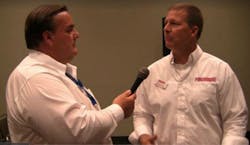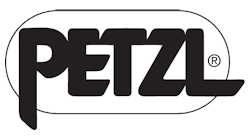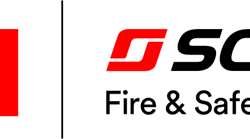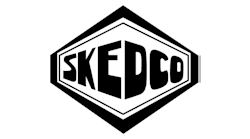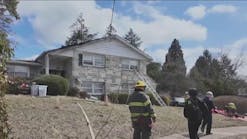A big part of any emergency services trade conference is an exhibit hall of products designed to help firefighters and emergency medical service providers do their jobs - and Firehouse Expo in Baltimore brought not only that this year, but a demonstration of many of the specialized technical rescue tools.
This year, technical rescue experts Bob Duemmel, a captain with the Rochester (N.Y.) Fire Department and technical rescue editor for Firehouse, and Mickey Conboy, a lieutenant with Squad 41 in FDNY’s special operations command, conducted a class designed to inform participants of the latest innovations in rescue tools.
Duemmel said the class, aptly called “The Latest in Specialized Rescue Tools,” is a resurrection of a presentation that had been led by the late Chief Ray Downey of FDNY, who perished in the September 11 attacks on the World Trade Center.
Since his death, the class has not been taught and both Duemmel and Conboy are hoping it catches on and will one day become a staple in the education line up.
“Chief Downey just wanted to share his vast knowledge with anyone who wanted to listen,” Conboy said. “That’s just the kind of guy he was. Anytime I had a question I would go to him and three hours later, I had [a fraction] of his vast knowledge.”
Conboy said for fire and emergency services work, simple is always better. “Three steps is good, two steps is better and one step is best,” he said of the process for deploying equipment.
Duemmel added that tools that are multi-function are also best for emergency services, as space is at a premium on vehicles that carry equipment to incidents, and budgets are tight.
“Some tools have a specific job,” Duemmel said, adding that not every department in a particular region needs to have specialized tools. “But, it would be good to have two or three placed strategically throughout your region.”
Using almost a show and tell approach, Duemmel and Conboy spoke on a variety of products that vendors on the show floor had lent the duo for demonstration purposes. The two presenters were quick to point out, however, that they were neither endorsing any products nor explaining how to use them.
“We’re just giving you some examples of what is out there and it’s up to you to go talk to the vendors out on the show floor,” Conboy said.
With that said, the presenters then proceeded to show a variety of products from patient packaging systems from Skedco, to stabilization struts from Res-Q-Jack and Paratech.
Vacuum and air knife systems from Rescue Vac were also shown and were briefly discussed about the advantages they provide for trench rescues and extracting victims buried in dirt, grain or any other particulate matter.
The Rescue Vac product requires a vacuum truck and Conboy said most departments don’t have that equipment as part of the fleet, but many cities and towns have those apparatus available for public works use, like sewer and ditch maintenance, and power companies often have that equipment available as well.
“Just talk to them and you might find just what you need,” Conboy said, noting that New York City has at least 30 vacuum trucks stationed throughout the city so the fire department doesn’t need to have its own. And, it is better to have them stationed throughout the city rather than at just one fire station.
ResQTec also had a mini cutter/spreader with an articulating head that would be appropriate for confined space where larger tools wouldn’t fit.
A mini rescue tool pump from TNT Rescue was also shown during the class. Duemmel said the pump weighs 24 pounds and can easily be handled by one person unlike some other tool pumps that require a small army of the fittest firefighters to deploy.
Duemmel said that nearly all rescue tool manufacturers are making tools powered by hydraulics, pneumatics and battery power to fit department needs.
“Manufacturers are listening to your voices and your ideas and providing what you need to do the job,” Duemmel said.
Conboy and Duemmel also showed rope rescue systems from CMC Rescue and Petzl. Duemmel explained some features of the CMC harness system designed to keep the rescuer safe, even if inverted, with a shoulder strap system.
A new thermal imaging camera from Scott Health and Safety was shown by Conboy, who said the new device incorporates Scott’s Pak-Tracker firefighter location device in it.
“This tool is for us to go in and find our own,” Conboy said, holding up the new camera.
Both Conboy and Duemmel encouraged the people who attended their presentation to visit the vendors on the show floor to learn more about the products and what they have available. Duemmel said manufacturers are most often enthusiastic to learn what departments need and want and will work with firefighters and rescuers to develop products and tools to get the job done.
Conboy reminded the students that technology and tools are all well and good but there’s one additional component that should never be forgotten.
“The best tool is a firefighter’s head,” Conboy said. “Use it.”
